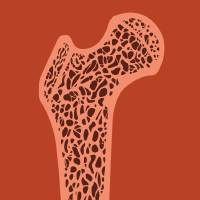Topic Editors


Bone-Related Diseases: From Molecular Mechanisms to Therapy Development
Topic Information
Dear Colleagues,
The prevalence and incidence of bone-related diseases (fractures, osteoarthritis, osteoporosis, bone tumors, etc.) are increasing with the development of society, especially in the aging population. These diseases often result in pain and disability and incapacitate people in their daily life, which imposes a considerable socioeconomic burden worldwide. Therefore, it is imperative to explore the biomarkers and molecular mechanisms for early diagnosis and targeted treatment of bone-related diseases. With the rise in systematic biology and bioinformatics, more analytical techniques, including single-cell sequencing (scSeq), cytometry by time of flight (CyTOF), bulk RNA-Seq, etc., have been applied to achieve a deeper understanding of the mechanisms, such as genomics, proteomics, metabolomics, transcriptomics, etc. Particularly, molecular mechanisms of bone-related diseases could be identified from the analysis of genes, proteins, metabolites, etc. In this Topic, we welcome original research or review articles related to new insights into pathogenesis, potential biomarkers, and recent advances in the study of bone-related diseases.
Submission of original articles, reviews, mini reviews, and commentaries is welcomed.Topics of interest include but are not limited to:
- Mechanism of action study, including molecular and cellular mechanisms, key signaling pathways in bone-related diseases.
- Novel therapeutic strategies in the treatment of bone-related diseases.
- Biomarker studies in bone tumors and other bone-related diseases.
- Drug development, including PD, PK, toxicity, and efficacy evaluation for osteoarthritis, osteoporosis and other bone-related diseases.
- Clinical trials including osteoarthritis, osteoporosis, and bone tumors.
Dr. Xiao Wang
Dr. Xin Dong
Topic Editors
Keywords
- bone-related diseases
- osteoporosis
- osteoarthritis
- multi-omics analysis
- biomarkers
- early diagnosis
- molecular mechanisms
- clinical trials
Participating Journals
| Journal Name | Impact Factor | CiteScore | Launched Year | First Decision (median) | APC | |
|---|---|---|---|---|---|---|

Biomedicines
|
4.7 | 3.7 | 2013 | 15.4 Days | CHF 2600 | Submit |

Biomolecules
|
5.5 | 8.3 | 2011 | 16.9 Days | CHF 2700 | Submit |

Cells
|
6.0 | 9.0 | 2012 | 16.6 Days | CHF 2700 | Submit |

Journal of Clinical Medicine
|
3.9 | 5.4 | 2012 | 17.9 Days | CHF 2600 | Submit |

Osteology
|
- | - | 2021 | 24 Days | CHF 1000 | Submit |

Genes
|
3.5 | 5.1 | 2010 | 16.5 Days | CHF 2600 | Submit |

International Journal of Molecular Sciences
|
5.6 | 7.8 | 2000 | 16.3 Days | CHF 2900 | Submit |

MDPI Topics is cooperating with Preprints.org and has built a direct connection between MDPI journals and Preprints.org. Authors are encouraged to enjoy the benefits by posting a preprint at Preprints.org prior to publication:
- Immediately share your ideas ahead of publication and establish your research priority;
- Protect your idea from being stolen with this time-stamped preprint article;
- Enhance the exposure and impact of your research;
- Receive feedback from your peers in advance;
- Have it indexed in Web of Science (Preprint Citation Index), Google Scholar, Crossref, SHARE, PrePubMed, Scilit and Europe PMC.

